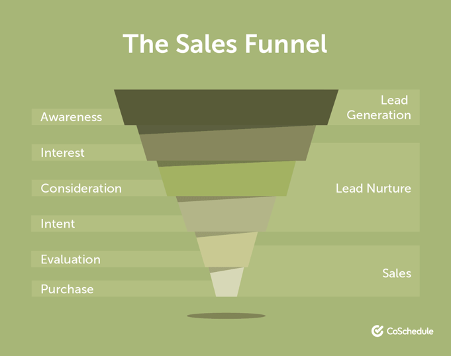Blogging is a top inbound marketing priority for 55% of content marketers. But creating a blogging strategy that delivers results is easier said than done. Too many people think blogging is an easy thing to do. Yes, a blog can cover pretty much anything you like – but a blog that holds any substance needs to be carefully thought about. You need a plan; you need to know who you are writing for and why you are writing, and good knowledge of SEO will also be of great help. But where do you start? This blog will show you how to devise the perfect blogging marketing strategy for your brand.

Is blogging still relevant?
This is a question we get asked frequently. And the answer is a definite yes. Blogging undoubtedly reaps benefits once you have an effective blogging marketing strategy in place. Here are six stats worth noting:
- According to the Content Marketing Institute, 60% of marketers report that content marketing (especially blogging) generates demand or leads.
- Internet users will spend three times more on blogs than they will on email.
- And according to WordPress, they will leave around 77 million comments per month on blog posts.
- Long-form content gets an average of 2% more links than shorter articles.
- Businesses that blog experience twice as much email traffic as businesses that don’t.
- Companies who blog get 97% more links to their websites.
Blogs are relatable, insuppressible pieces of content. And well-written blogs build trust with your audience; they can help your brand cut through the noise, express personality and set you apart from your competition as a thought leader in your niche.

Do people still read blogs?
According to Optinmonster, 409 million people view more than 20 billion blog pages each month. That works out with about 77% of internet users reading blogs regularly – that’s a vast audience your brand shouldn’t sleep on. The proof is in the pudding: people still read blogs.
But your blog won’t be for everyone – that’s just a matter of fact. You need to find your niche and write for your audience – this is why blogging marketing strategy is critical. You’re not writing what you want – you need to write will perform well. We’ve written hundreds of blogs for businesses of all sizes – let us show you how it’s done.
How to start a blog
Starting a blog is straightforward: add a page to your website, and you’re halfway there. But producing a blog that delivers results is a journey with many ups and downs. There will be a lot of trial and error, A/B testing and figuring out what works. One-fifth of marketers report that getting traffic from Google has become more challenging over the last two years – but don’t let that put you off. By putting more time and effort into the planning stages – starting with this article – you’ll begin blogging equipped with the right know-how to do well.
Defining your purpose
Devising the perfect blogging marketing strategy for your brand begins with figuring out and defining what your blog will be about; what are your blog’s topic and purpose?
Your niche will define the blog topic you choose: it should be broad enough to write hundreds of articles about but specific enough to relate to your business or area of expertise. Ask yourself why this blog exists – and be able to answer it in one clear sentence.
But your blog will also be influenced by your audience. Understanding who you are writing for is crucial because blogs written with your target customer in mind are more likely to see conversions and inbound leads. Refer to your buyer personas and ask yourself: what do they want to know about or learn? What do they already know? And what will resonate with them?
Here are three blog examples to get you started:
- A marketing agency might start a blog offering advice, tips and resources in the content marketing space. Covering social media, blogging, email marketing and copywriting, their articles will be aimed at business owners and marketing executives looking to boost their company’s marketing efforts.
- A chain of beauty salons may consider starting a blog offering beauty advice to women. They will cover haircare, skincare and well-being, offering advice and tips to their audience. They will also comment on social media trends and celebrity news likely to appeal to their target customer.
- A farmers market in London might start a blog offering their opinions and advice on shopping sustainably and living an environmentally conscious lifestyle. They will focus on how to source sustainable food as well as other household products. They will also offer suggestions on environmentally friendly things to do and places to visit in the local area, aiming their articles at anyone who may be looking to change their lifestyle.
Setting clear blog objectives
Why are you creating a blog? What is it that you want your content to do? What do you want your writing to achieve? Setting clear blog objectives means you’ll plan content and write articles with conviction. Make your goals specific – we recommend using the SMART goal framework here.
Do you want to raise brand awareness? Increase sales? Engage with your loyal customers? Or do you want to insert yourself or your brand as an expert in your field? Once you know your goal, you can refer back to your target audience and create blogs that will intercept potential customers at different stages of your sales funnel.

Finding the right titles
Where you look to find potential blog titles will depend greatly on the objectives you set in the previous step. And there are lots of different avenues you can take to find blog ideas fit for your target customer. Here are a few of our favourites:
- Keyword research: writing for SEO will help you reach new audiences by getting your content to rank high in SERPs. Build a list of target keywords. A good place to start is Google’s auto-suggest feature to find out what specific words or phrases people search for. You could also try a free tool like Ahrefs Keyword Generator to discover keyword ideas and gauge monthly search volumes and keyword difficulty. Once you’ve done your research, you can build blog titles around them targeting different search intents. By aligning your content with different search intent, you have a better chance of intercepting potential customers during different stages of the sales funnel.
- Turn to your competitors: search for blogs in your industry and note the most popular ones. These will be a great source of inspiration for your blogging strategy. Look at these blogs through the eyes of a user – what they do well, what topics they cover and what they could improve.
- Use content tools like BuzzSumo or Answer the Public to help you discover your niche’s most searched queries and trending topics. Use the results to structure blog titles – bonus points for including good-quality keywords in there too.
How to write a blog
Writing a blog can often be time-consuming, but there are other times you can crack out an awesome article in just over 15 minutes (and we wrote a blog with steps on how to do this – read it here). Here are five best practices to keep in mind whilst writing:
- Good headlines are essential: According to Optinmonster, making your headline 6-8 words can increase the clickthrough rate by 21% and including a hyphen or colon can increase it by a further 9%. Your headline needs to be informative and capture your reader’s attention. But avoid clickbait. Your audience does not want to be misled.
- Remember you are writing for SEO: Google wants you to write quality content that its users trust will answer their search query. You need to write for your audience first and then optimise your content to make it easy for Google’s algorithm to pick up the SEO signals that your content is high quality and answers search intent. We wrote a blog on how to write for SEO here.
- Make it easy to read: The structure of your blogs is critical. Use bullet points, keep sentences short and make sure your paragraphs are no more than 3-4 sentences. 73% of people admit to skimming blog posts, while 27% consume posts thoroughly. By keeping your copy scannable and easy to digest, you will appeal to more people.
- Let’s talk about length: The length of your blog posts is important too. The average blog post is 1376 words, according to Orbit Media. However, blogs of over 2000 words are far more likely to have strong results. Engagement typically drops after seven minutes, so keep your copy engaging.
- Don’t forget your CTA: Calls to action are vital for ensuring conversions. Think of your CTAs as a signpost directing your customer where to go next. A good CTA could include a link to your service page, contact form or online shop.

How frequently should you post?
Consistency is important when it comes to any sector of your content marketing. However, the ideal blog publishing frequency is a question marketers have debated for years. While some swear by posting daily – and in our opinion, this is probably a bit of an overkill – most experts agree that blogging two to four times per weekis the best way to see increased traction from your content.
However, it’s much more nuanced than that, and we recommend quality over quantity. Quality of content is rated the #1 most important success factor among all bloggers, according to Growth Badger. Publishing one well-written, 2000-word article weekly should deliver better results in the long run than three hastily written missives. Different niches will also have different rules – especially those in which the topics are more evergreen: for example, subjects where there are relatively few new “discoveries” compared to those changing frequently, e.g. how to play the guitar vs how to find the latest apps for your phone.
Analysing blog success and updating old posts
If you set SMART goals in the planning stages of your blogging strategy, you will have already defined how you will keep track of the success of your posts. The most common way of doing this will be through analytics which you can use to get a solid understanding of what your audience responds well to and inform future titles.
Another great way to keep track of the success of your blog is by performing a content audit. Your blog will need to be updated and maintained regularly to achieve your starting objectives, and a content audit often does the trick.
It will help to reveal the strengths and weaknesses in your strategy, weed out poorly performing posts and highlight opportunities for editing or revising. Keeping your blog posts up to date will ensure the content stays relevant – this can include commenting on new trends, adding in recent studies and removing information that is no longer accurate or relevant.
Perfecting your blogging marketing strategy
Blogging is a long-term investment worth choosing. But consistency is vital if you want results. Save time by considering a copywriter – and we can help. Our blog writing service provides you with regular, optimised content that increases social media engagement, improves search engine ranking and drives sales, using SEO research to choose topics that will deliver the desired results. Sound good? Get in touch.
